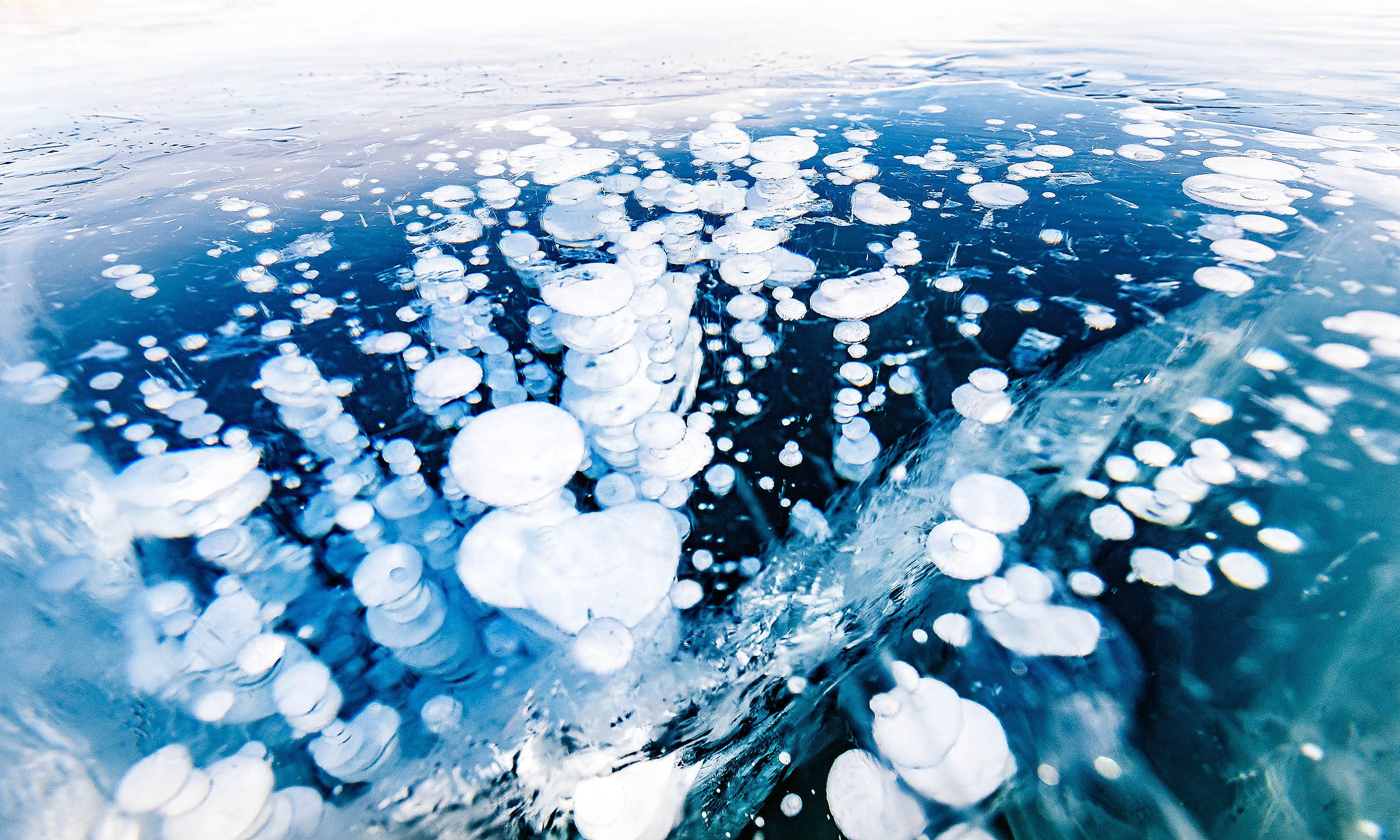
The frozen spheres of methane gas found in the Arctic are captivatingly beautiful, yet their appearance can be misleading. Methane is an extremely potent greenhouse gas, often eclipsed by carbon dioxide in climate change discussions, despite its more severe implications.
Common contributors to climate change usually include industrial pollution, vehicle emissions, deforestation, and agricultural practices.
However, researchers have recently identified an unexpected and substantial source of methane emissions lying beneath the icy expanses of the Arctic.
Methane: A Strong Climate Catalyst
Methane is a crucial greenhouse gas that often doesn’t receive as much attention as carbon dioxide. Yet, it is about 80 times more effective at trapping heat in the atmosphere over a 20-year period.
This gas originates from natural sources like wetlands and termites, but human actions significantly amplify its emissions.
Meanwhile, leaks during fossil fuel extraction and from pipelines contribute further to the methane problem.
The challenge? Methane has a shorter lifespan in the atmosphere compared to CO₂—lasting only about 12 years—but it inflicts considerable damage during that brief period.
Reducing methane emissions could be a rapid method to decelerate global warming, making it one of the most effective strategies to combat climate change.
Uncovering Methane Emissions from Glaciers
Postdoctoral researchers Gabrielle Kleber and Leonard Magerl from UiT, Arctic University of Norway’s iC3 (Centre for Ice, Cryosphere, Carbon, and Climate), have found that Arctic glaciers might not be as innocent as they appear.
These glaciers are leaking significant amounts of methane into the atmosphere from beneath their icy surfaces.
This conclusion comes from studies at Vallåkrabreen, a small glacier located in central Svalbard.
Methane Levels in Glacial Systems
The researchers monitored methane concentrations in groundwater springs and the melt river draining from the glacier. The results were astounding.
Methane levels in the melt river were recorded at levels up to 800 times higher than the equilibrium level in the atmosphere, peaking at 3,170 nanomolar at the onset of the melt season.
“We anticipated some methane presence in the meltwater, but the concentration levels we observed were astonishingly high,” Gabrielle stated, emphasizing the unexpected scale of the issue.
“Isotopic analysis revealed that the methane originates geologically and is released as the glacier retreats, allowing meltwater to flow through rock fractures.”
Interestingly, the source of this methane was not bacterial activity beneath the ice, which had been speculated in other studies of glacial environments.
Instead, this methane originates from ancient geological formations that have been contained in the region for millions of years.
The Concept of Glacial Fracking
As the researchers delved deeper into their investigation, they uncovered more about the glaciers’ roles in methane emissions.
The scientists refer to this process as “glacial fracking,” whereby glaciers act as massive caps that trap methane below ground. As they melt, water forces the gas through fissures in the bedrock, releasing it into the atmosphere.
This phenomenon is not isolated to just one glacier.
Researchers estimate that similar processes may be occurring in hundreds of other glaciers across Svalbard, where over 1,400 land-terminating glaciers exist, many situated above methane-rich bedrock.
The Climate Feedback Loop
The implications of this discovery reach far beyond Svalbard, impacting the Arctic region and the entire planet.
The Arctic is warming at a rate four times faster than the global average, with its glaciers retreating alarmingly.
As these glaciers continue to shrink, they may unleash more methane, creating a positive feedback loop that accelerates warming, causes further glacial melting, releases more methane, and amplifies warming further.
“Methane is a significantly more powerful greenhouse gas than carbon dioxide in the short term. Even though these emissions are seasonal, their cumulative effect could be immense as more glaciers melt,” the research team cautioned, highlighting the potential global climate implications.
Future Directions for Glacier Research
These findings underscore the necessity of comprehending the Arctic carbon cycle and how climate change influences it.
Future studies will focus on re-evaluating methane budgets in the Arctic, factoring in glacial emissions alongside methane releases from permafrost thaw and wetland systems.
While this research marks a vital initial step, further investigation is essential to grasp the full extent of the issue.
The complete study is published in the journal Biogeosciences.
—–
Enjoyed this article? Sign up for our newsletter to receive engaging articles, exclusive content, and the latest updates.
Explore more on EarthSnap, a free application created by Eric Ralls and Earth.com.
—–









